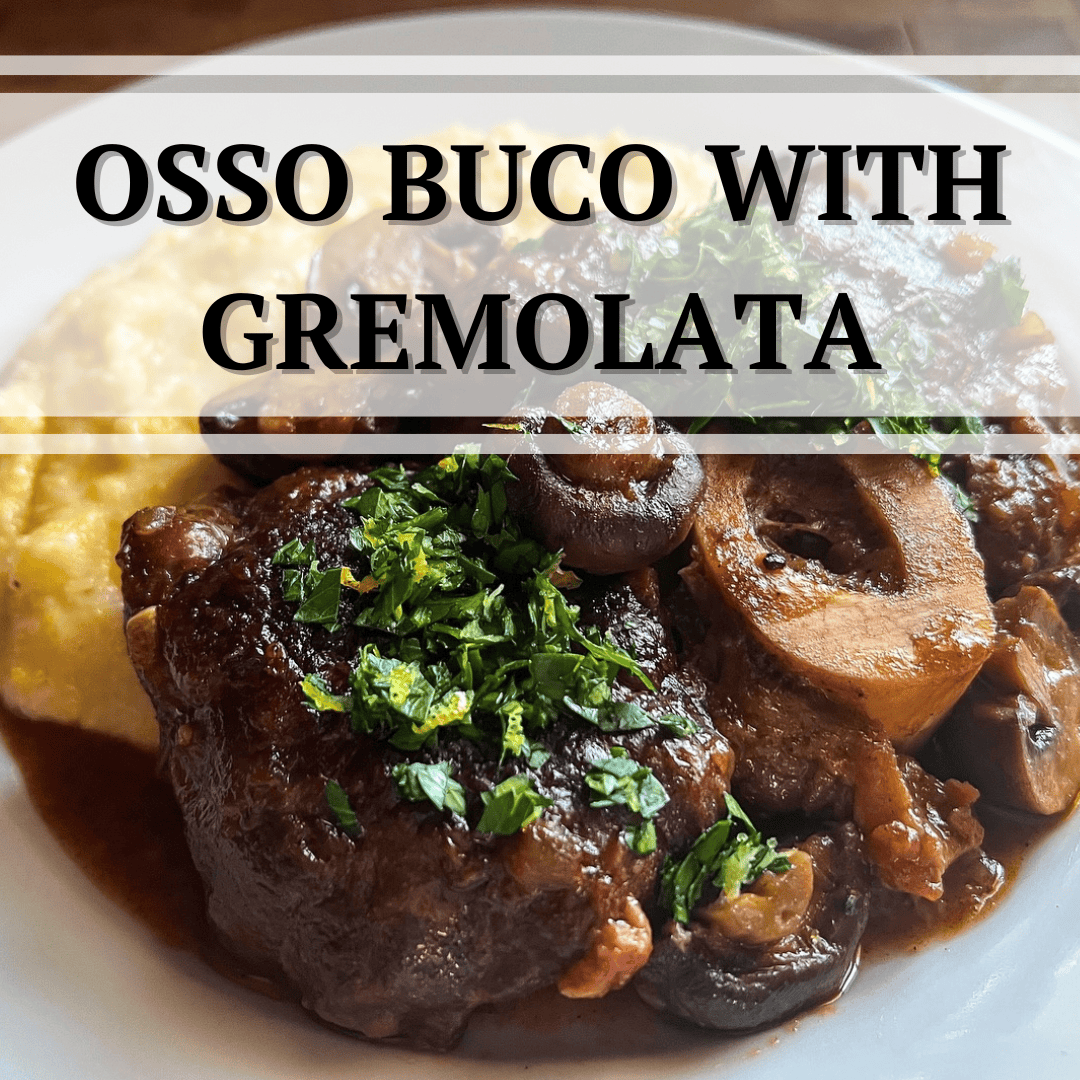If you’ve ever ordered osso buco at a restaurant and thought, ‘There’s no way I could make this at home,’ I’m here to change your mind. This dish may sound fancy (and it is), but it’s also surprisingly approachable once you break it down.
Osso buco, which literally means “bone with a hole” in Italian, is all about slow-cooked tenderness.
And when you finish it with gremolata—a zesty mix of lemon zest, garlic, and parsley—you get this amazing contrast of richness and brightness that just sings.
It’s boujee, yes. And absolutely doable at home.
What’s Osso Buco?

Osso buco is an Italian dish traditionally made with cross-cut veal shanks, braised slowly with onions, carrots, celery, white wine, and broth until the meat becomes tender and flavorful. The marrow from the bone infuses the sauce, giving it that rich, velvety texture.
The dish originated in Milan, so sometimes you’ll see it called Osso buco alla Milanese, especially when it’s served with saffron risotto.
What’s Gremolata?

Gremolata is a simple but vibrant Italian condiment made with finely chopped parsley, garlic, and lemon zest. It’s sprinkled over the osso buco just before serving, and it instantly cuts through the richness of the dish with fresh, citrusy notes.
Think of it as the finishing touch that wakes everything up.
Tips for Cooking and Prepping
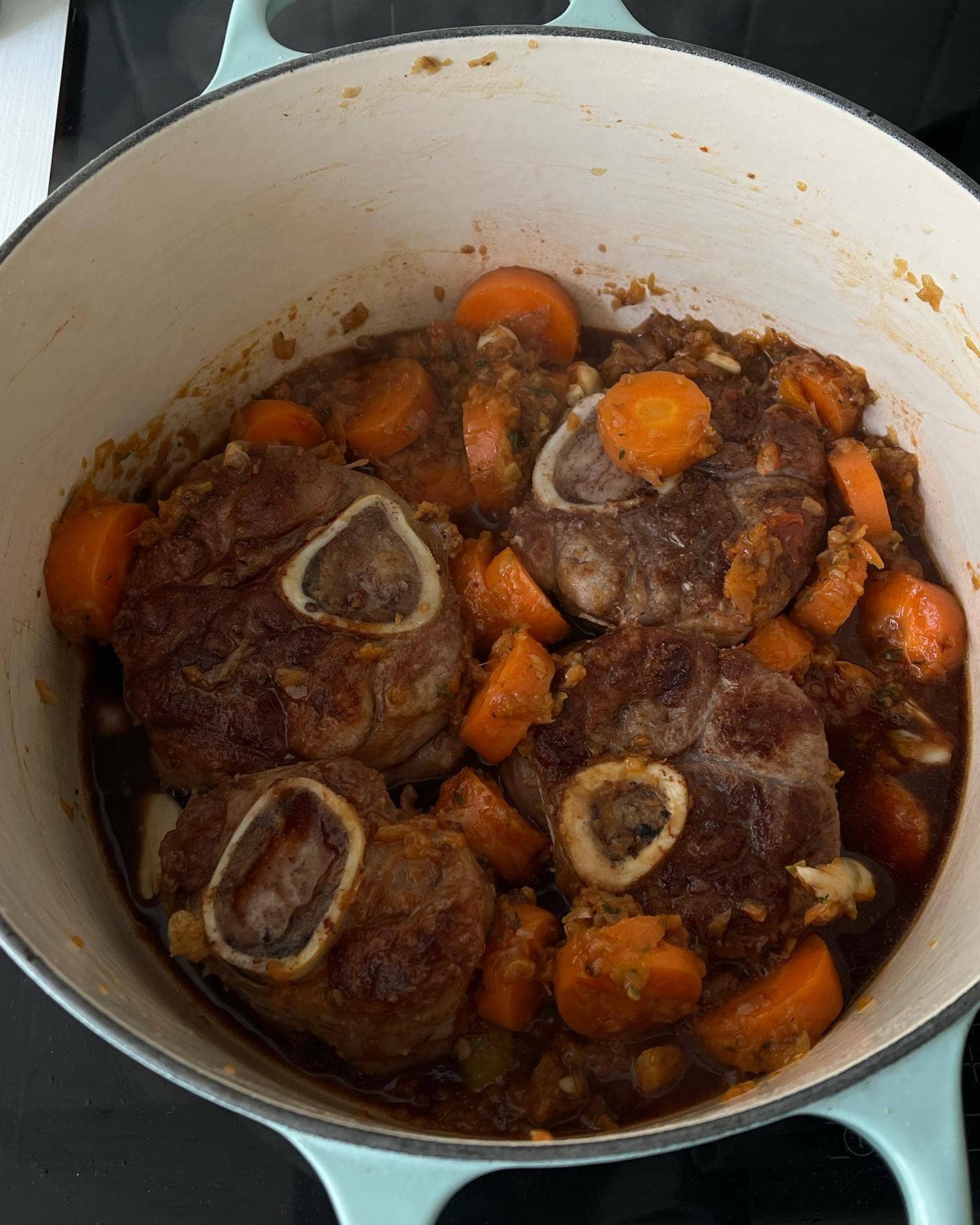
If I can give you one piece of advice: don’t rush it. Osso buco needs time to become tender; that’s the magic of braising.
I like to sear the meat well first; you want a deep brown crust on all sides because that’s where the flavor begins. Use a heavy-bottomed pot or Dutch oven for even heat.
When adding the braising liquid (a mix of broth, white wine, and tomatoes), make sure it comes about halfway up the meat, not fully submerged. This keeps the sauce rich, not watery. Once it’s in the oven, let it do its thing; resist the urge to peek too often.
And finally, don’t skip the gremolata. It might look like a garnish, but it’s what elevates this dish from cozy to restaurant-level.
Can Other Meats Be Used?
Traditionally, osso buco is made with veal, but if you can’t find it or prefer something else, beef shanks are a great substitute. Do note they’ll take a bit longer to tenderize. Lamb shanks also work beautifully for a slightly gamier flavor.
The key is to use bone-in cuts because that’s where all the flavor (and that signature marrow goodness) comes from
Serving Suggestions
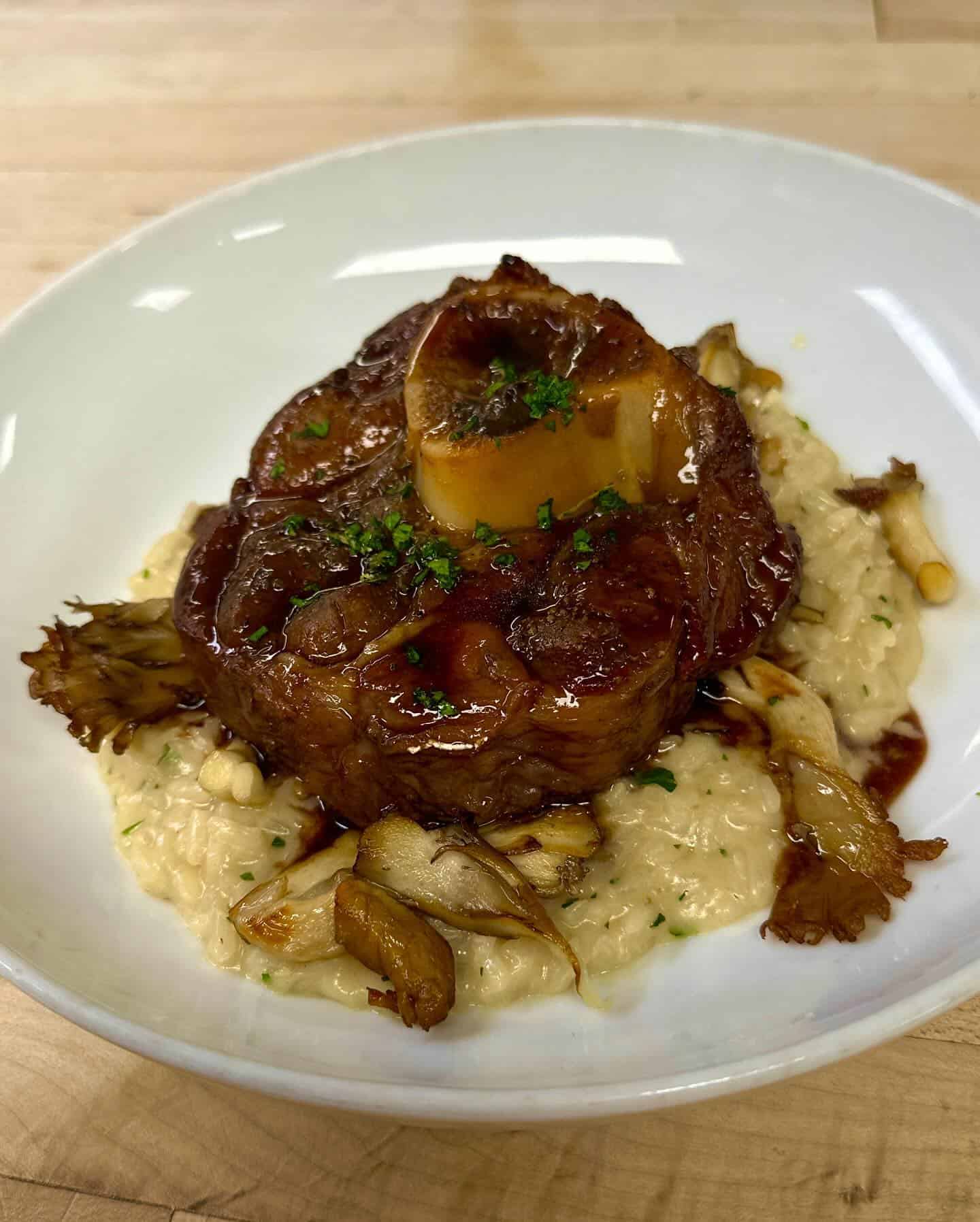
Osso buco pairs wonderfully with risotto alla Milanese, creamy mashed potatoes, or even buttered polenta. The rich, savory sauce deserves something that can soak it all up.
If you want a lighter pairing, serve it with crusty bread and a simple arugula salad with lemon dressing to balance the richness.
Make-Ahead and Storage Tips
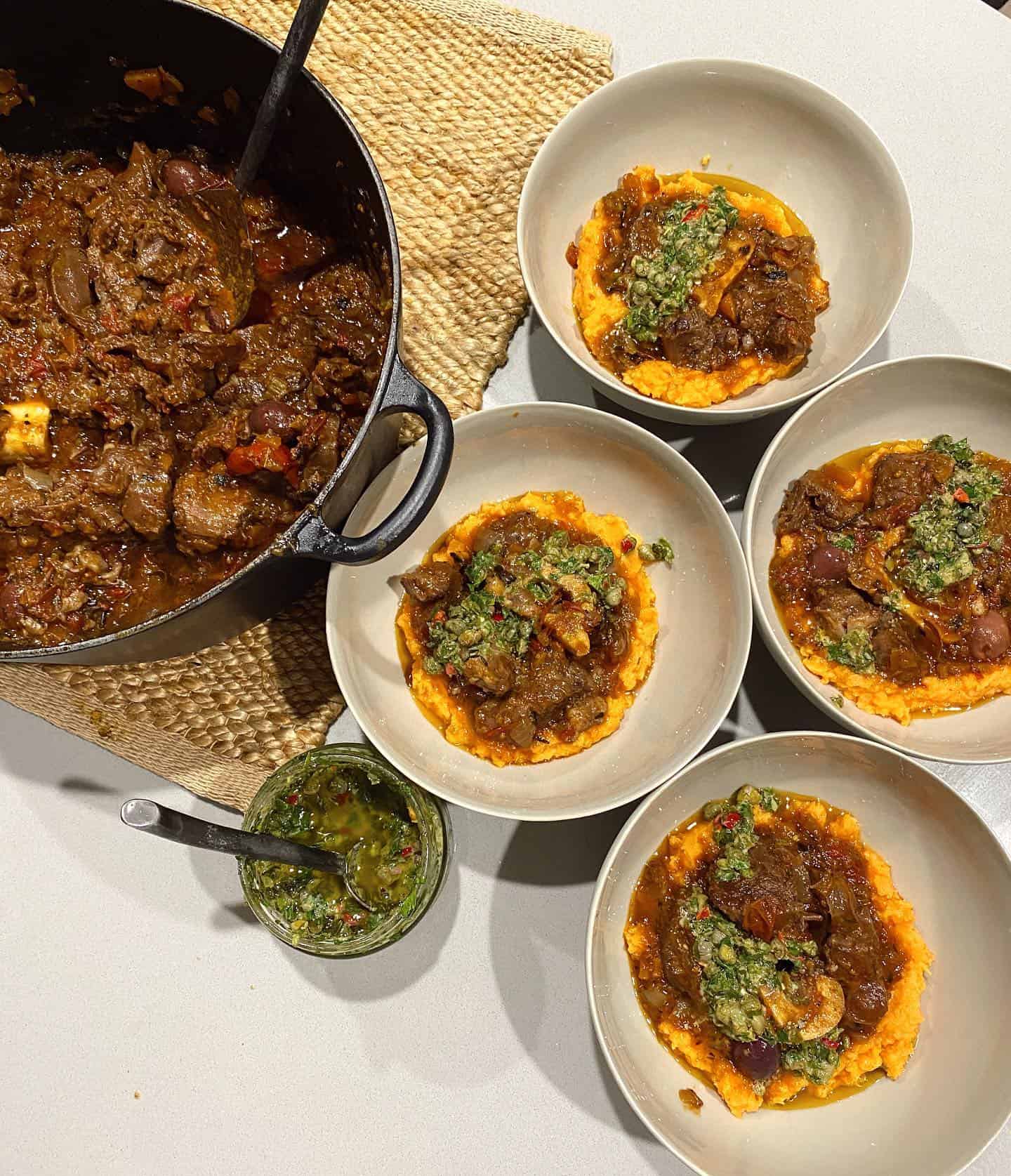
This is one of those dishes that actually tastes better the next day. The flavors deepen as it rests, so don’t hesitate to make it ahead.
Store cooled osso buco in an airtight container in the fridge for up to 4 days, or freeze for up to 3 months. Reheat gently over low heat on the stove or in the oven, adding a splash of broth if needed to loosen the sauce.
If you’re hosting, braise it a day before. This way, the pressure’s off your shoulders and the dish will be even more flavorful.
FAQs
What cut of meat is Osso Buco?
Osso buco uses cross-cut veal shanks, meaning the shank is sliced horizontally to include the marrow bone. This cut is ideal for braising because it’s full of connective tissue that melts into tender perfection after slow cooking.
What is Osso Buco in English?
In English, Osso buco translates literally to “bone with a hole,” referring to the marrow bone at the center of the veal shank.
Why is Osso Buco so expensive?
It’s all about the cut. Veal shanks are a specialty item and take time to cook properly, so it’s often priced higher in restaurants. But making it at home cuts the cost significantly, and you get the same luxurious results.
Is Osso Buco difficult to cook?
Not at all! It’s more about patience than skill. Once you’ve seared the meat and added your braising liquid, the oven does the hard work.
What is the secret to tender Osso Buco?
Two things: low and slow cooking and moisture. Braise the meat gently for a few hours, and don’t let the liquid dry out. The connective tissues will break down into gelatin, giving you that fall-apart tenderness.
Osso Buco with Gremolata
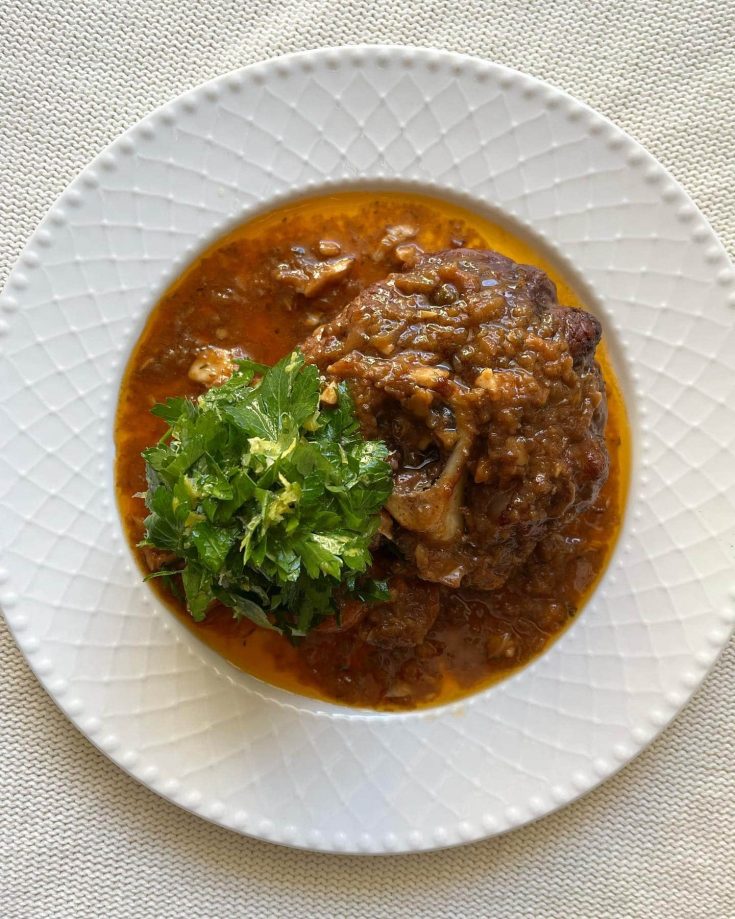
Image credit: @joelbennets
Ingredients
For the Osso Buco
- 4 veal shanks, about 1½ inches thick
- Salt and pepper, to taste
- ½ cup all-purpose flour, for dredging
- 3 tablespoons olive oil
- 1 onion, chopped
- 2 carrots, chopped
- 2 celery stalks, chopped
- 3 cloves garlic, minced
- 1 cup dry white wine
- 1 ½ cups beef or veal broth
- 1 cup crushed tomatoes
- 1 bay leaf
- 1 teaspoon dried thyme
- 1 teaspoon rosemary
For the Gremolata
- Zest of 1 lemon
- 2 tablespoons finely chopped parsley
- 1 small garlic clove, minced
Instructions
- Prep the meat. Pat the veal shanks dry, season generously with salt and pepper, then dredge lightly in flour.
- Sear. In a heavy-bottomed pot or Dutch oven, heat olive oil over medium-high heat. Brown the shanks on all sides, then remove and set aside.
- Sauté aromatics. In the same pot, add onion, carrot, celery, and garlic. Cook until softened and fragrant.
- Deglaze. Pour in white wine, scraping up any brown bits from the bottom. Let it simmer for 2–3 minutes.
- Add liquids and herbs. Stir in broth, crushed tomatoes, bay leaf, thyme, and rosemary. Return the veal to the pot, cover, and simmer on low or transfer to a 325°F (160°C) oven for 2½ to 3 hours, until meat is fork-tender.
- Make gremolata. Mix lemon zest, parsley, and garlic in a small bowl.
- Serve. Spoon osso buco over mashed potatoes or risotto, drizzle with sauce, and sprinkle gremolata on top.
Featured image credit: @marquisderad

